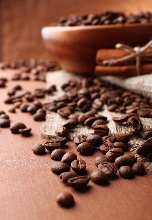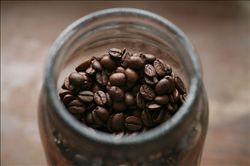Coffee beans-production tips and production methods
1. To avoid bitterness, never boil coffee. The ideal temperature should be between 90℃ and 96 ℃.
2. Do not reheat coffee. It is recommended to determine how much to make each time according to the amount of drinking, so as to ensure that fresh coffee is drunk every time. The optimum temperature for coffee flavor was 86℃.
3. Use fresh, cold water to prepare. Each cup of coffee contains 98% water. If the water smells funny, consider changing filtered or bottled water.
4. Used coffee powder should not be reused. These coffee grounds contain only bitter ingredients.
5. According to the coffee maker, select the coffee powder of the corresponding grinding degree. Because coffee ground too fine, will cause excessive extraction, bitter taste, or clogging coffee machine; ground too coarse, will cause coffee as light as water. If a drip coffee maker is used, proper grinding should ensure that the coffee drips within 2-4 minutes.
6. No matter how much coffee you make, the ideal ratio is 180 ml of water for every 10 grams (two tablespoons) of ground coffee.
7. Coffee stays warm on the stove for up to 20 minutes. Over time, the flavor changes. However, if a vacuum flask is used, the flavor can be maintained for a longer time.
Coffee beans-production
coffee beans
washed coffee beans
After harvest to market before shipping to remove the skin, pulp, skin and silver. There are two methods: drying (also known as natural method or non-washing) and washing.
Drying formula:
The method is simpler. First of all, the fruit will be just picked widely spread in the sun for a week or two, until the fruit issued a cracking sound so far, natural drying. After that, the husker removes the dried pulp, endocarp and silver skin.
Coffee beans refined in this way are slightly sour and bitter. All coffee beans grown in Brazil, Ethiopia, Yemen, etc. are obtained in this way. The disadvantages of this method are that it is easily affected by weather and easy to incorporate defective beans and other impurities. Therefore, it must be carefully screened.
Water washing:
The fruits to be harvested are put into a flowing water tank, and after the fruits floating on the water surface are removed, the skin and pulp are removed by a pulp removing machine. Then put it in the sink and remove the floating pulp. After that, move into the fermentation tank, soak for half a day to a day, and then dissolve the colloid on the surface of the fermented coffee beans.
After washing with water, drying for several days, drying with a machine, and finally removing the endocarp with a huller, it becomes a raw coffee bean that can be used as a commodity. In this way, coffee beans will be more beautiful than dry coffee beans, and less impurities. Colombia, Mexico, Guatemala and other countries about 70% of the production are using this method

Important Notice :
前街咖啡 FrontStreet Coffee has moved to new addredd:
FrontStreet Coffee Address: 315,Donghua East Road,GuangZhou
Tel:020 38364473
- Prev

Origin Culture and species Morphology of Colombian Coffee
The earliest records of coffee cultivation in Colombia appear in a book called The Illustrated Orinoca by Spanish missionary Jose Gumilla. He describes what he saw when he preached on both sides of the Meta River in 1730, in which he mentioned the local coffee plantation. By 1787, other missionaries had spread coffee to other parts of Colombia.
- Next

Roasting degree of coffee beans Coffee roasting technology Italian coffee machine extraction leakage
A series of chemical changes occur during the baking process. After about 5-25 minutes of baking (depending on the temperature selected), the green coffee beans lose some humidity and turn yellow. In this process, the coffee beans will swell, changing from a strong, high-density raw bean to a low-density fluffy state. After this process, the size of the coffee beans will about double, starting
Related
- Does Rose Summer choose Blue, Green or Red? Detailed explanation of Rose Summer Coffee plots and Classification in Panamanian Jade Manor
- What is the difference between the origin, producing area, processing plant, cooperative and manor of coffee beans?
- How fine does the espresso powder fit? how to grind the espresso?
- Sca coffee roasting degree color card coffee roasting degree 8 roasting color values what do you mean?
- The practice of lattes: how to make lattes at home
- Introduction to Indonesian Fine Coffee beans-- Java Coffee producing area of Indonesian Arabica Coffee
- How much will the flavor of light and medium roasted rose summer be expressed? What baking level is rose summer suitable for?
- Introduction to the characteristics of washing, sun-drying or wet-planing coffee commonly used in Mantenin, Indonesia
- Price characteristics of Arabica Coffee Bean Starbucks introduction to Manning Coffee Bean Taste producing area Variety Manor
- What is the authentic Yega flavor? What are the flavor characteristics of the really excellent Yejasuffi coffee beans?

